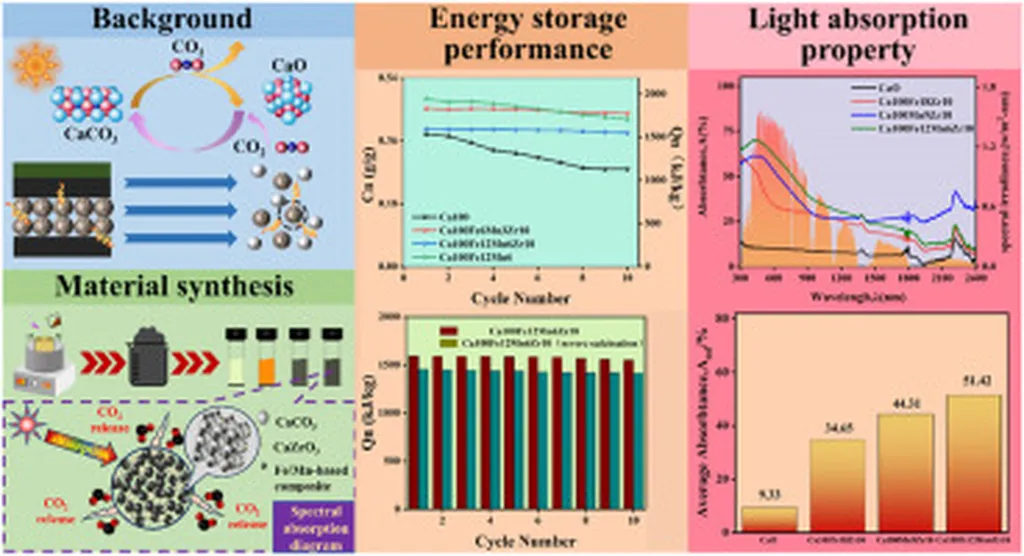In the quest to harness the sun’s power more effectively, researchers are turning to innovative combinations of technologies to overcome the inherent intermittency of solar energy. A recent study published in the journal *Molecules*, titled “Influence of Cr- and Co-Doped CaO on Adsorption Properties: DFT Study,” sheds light on a promising approach that could revolutionize energy storage and carbon capture. The research, led by Wei Shi from the School of New Energy and Materials at Northeast Petroleum University in China, explores how doping calcium oxide (CaO) with chromium (Cr) and cobalt (Co) can enhance its adsorption properties and resistance to sintering, a common issue in high-temperature applications.
The study focuses on the synergy between concentrated solar power (CSP) and calcium looping (CaL) technology. CSP captures solar energy and converts it into heat, while CaL uses calcium-based materials to capture CO₂ and store energy. However, the effectiveness of CaL is often hampered by the sintering of calcium-based materials during high-temperature cycling, which densifies the surface structure and reduces efficiency.
“We aimed to understand how doping with transition metals like Co and Cr could mitigate these issues and improve the performance of CaO,” Shi explained. The team employed Density Functional Theory (DFT) calculations to investigate the enhancement mechanisms. Their findings revealed that Co and Cr doping shortens the bond length between metal and oxygen atoms, enhancing covalent bonding interactions and reducing the energy required to form oxygen vacancies.
One of the most significant discoveries was the reduction in the O²⁻ diffusion energy barrier. For pure CaO, this barrier stands at 4.606 eV, but it drops to 3.648 eV for Co-doped CaO and a remarkable 2.854 eV for Cr-doped CaO. This reduction promotes CO₂ adsorption kinetics, making the process more efficient. Additionally, the CO₂ adsorption energy increased significantly, and a partial density of states (PDOS) analysis showed that doping enhanced the C-O orbital hybridization strength.
The study also found that the formation of stronger metal–oxygen bonds on the doped surface effectively inhibits particle migration and sintering. “This is a crucial finding,” Shi noted. “It suggests that doping can not only improve adsorption properties but also enhance the material’s durability under high-temperature conditions.”
The implications for the energy sector are substantial. Enhanced calcium-based sorbents could lead to more efficient and durable systems for CO₂ capture and energy storage, addressing key challenges in the deployment of CSP and other high-temperature processes. “This research provides a theoretical basis for designing more effective calcium-based materials,” Shi added. “It opens up new avenues for optimizing the electronic structure of CaO and improving its performance in real-world applications.”
As the energy sector continues to evolve, the integration of advanced materials and innovative technologies will be pivotal. This study highlights the potential of surface doping to overcome long-standing challenges in thermochemical energy storage and calcium looping. With further research and development, these findings could pave the way for more efficient and sustainable energy solutions, ultimately contributing to a cleaner and more resilient energy future.

